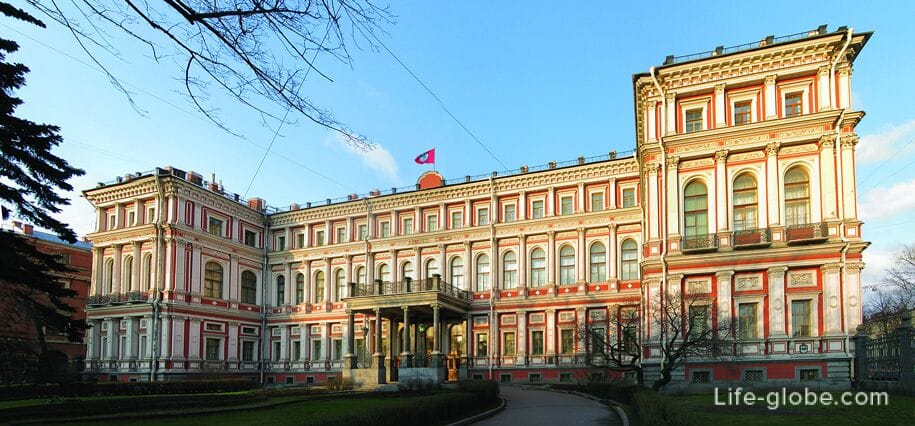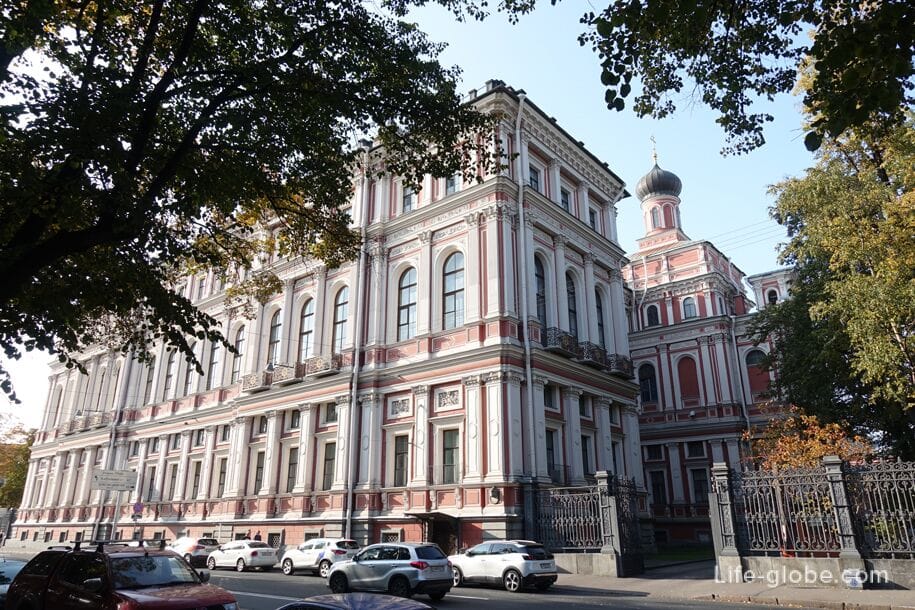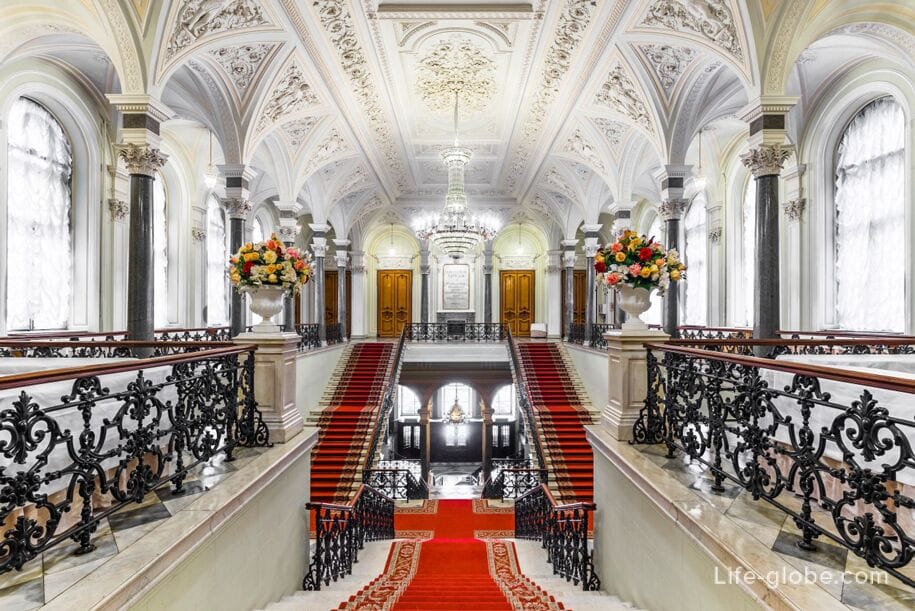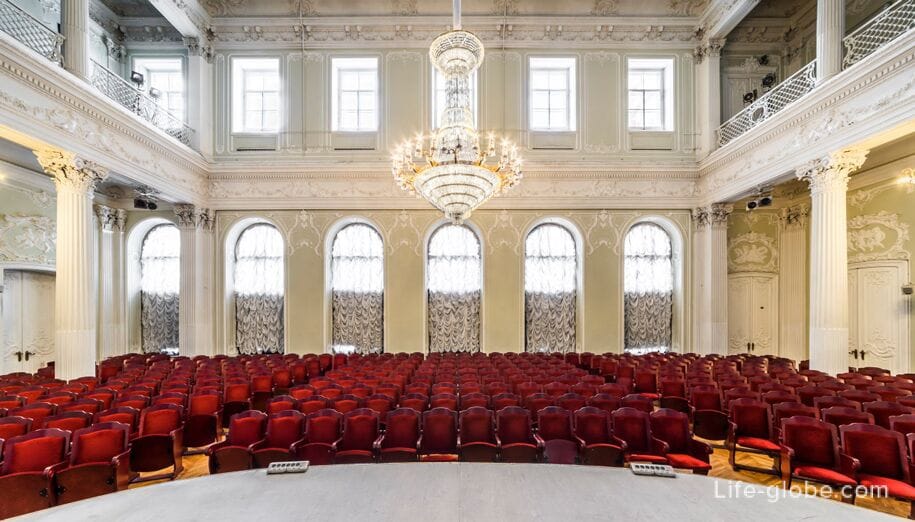
Nicholas Palace, also known as the Palace of Labor - one of the palaces of St. Petersburg, which is located on the square of the same name in the city center.
The palace is a monument of history and architecture and is a masterpiece of eclectic Russian architecture of the mid-19th century.

The palace was built by order of Emperor Nicholas I as a ceremonial residence for his third son, Grand Duke Nikolai Nikolaevich the elder ("the elder" he was called, so as not to be confused with his son, Nikolai Nikolaevich the younger).
The construction of the palace in the Neo-Renaissance style lasted from 1853 to 1861, designed by A. I. Stackenschneider.
At the palace there were: an arena, stables, outbuildings for servants and a church consecrated in the name of the icon "Joy of All who Mourn", with a basement like the cave of the Holy Sepulchre.
After the death of Grand Duke Nikolai Nikolaevich, in 1890, the Nicholas Palace was transferred to the Department of Estates for debts.
At the end of the 19th century, the Nikolayev Palace housed the Kseninsky Institute of Noble Maidens, which accepted noble girls-half-orphans who had lost one of their parents.
In the Soviet era, the palace was placed at the disposal of the Petrograd Soviet of Trade Unions. Since then, the palace has also been known as the"palace of Labor". In 1923, the same name was given to the square - "Labor Square", where the palace is located.
During the Great Patriotic War, the Palace of Labor housed a hospital. The building was seriously damaged by the bombing. It was restored in the late 1940s and early 1950s.
In 1962, the Palace of Culture of the Leningrad Regional Council of Trade Unions was opened in the Palace of Labor.
Currently, the Nikolaev Palace is occupied by the Federation Council of Trade Unions of St. Petersburg and the Leningrad Region. It is also used for commercial purposes, some of the premises are rented out.
Architecturally, the building is similar to the Italian palaces of the 16th century-the palace is decorated with stucco, sculptural elements, pilasters and colonnades, a spacious balcony is located above the front porch facing the Labor Square. The facade is painted in red and brown, and the columns and decorative moldings are made in white.
The first floor of the palace is decorated with wide Ionic pilasters, the second with Corinthian columns, and the third with short narrow pilasters.


The interior of the palace is impressed by the Grand Staircase, which is one of the most interesting works of architecture of St. Petersburg in the 19th century.

The palace has a concert hall with 350 seats.

The Royal Palace is located near the island of New Holland and occupies a block between Konnogvardeysky Boulevard, Labor Square and Galernaya Street. The main facade of the palace faces the Labor Square.
Address of the Nikolaev Palace: Truda Square, 4.
Today, the palace hosts group tours, concerts, banquets, celebrations, and seminars.
You can also rent one of the halls for personal events and banquets.
During the New Year holidays, the palace hosts the best Christmas Tree in St. Petersburg, the Royal Christmas Tree.
Website of the Nikolaev Palace: nikolaevskypalace.
How to getthere : by public transport from the metro station Admiralteiskaya-bus 5 or on foot (about 20 minutes). From the metro station "Vasileostrovskaya" you can also walk-first to the Blagoveshchensk Bridge, cross the Neva River and go to the Labor Square (about 25 minutes). Ground transport: from the Haymarket Square to the Labor Square, minibuses K1, K124, K169, K186, K190, K222, K350 run.
Entrance to the Nicholas Palace from the Labor Square, doors with a visor.
All accommodation facilities in St. Petersburg, including in the city center and near the Nicholas Palace, can be viewed and booked here